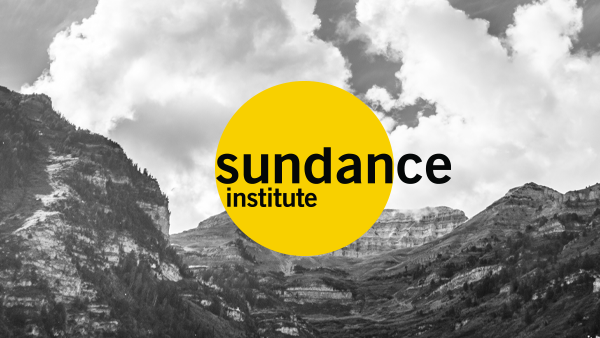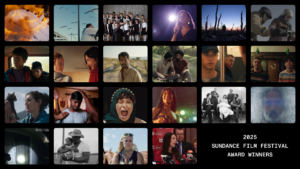Caroline Libresco
It was a whirlwind trip to Morocco for Film Forward: five days, five cities, screenings, workshops, heated discussions, idea exchanges, and meetings with the Moroccan filmmaking and festival communities. (And, I can’t lie, a couple of quick forays into the Bazaar were indulged. Shhh… don’t tell.)
We screened at a Cinemateque and a community center in Tangier, held workshops at a free film school and a public middle-school in Tetouan, presented a film and dialogue in a working-class neighborhood cinema in Sale, held screenings and a workshop at a film school in Sidi Moumen, a Casablanca slum where Islamist extremism is rising, and visited a film set on the working-class outskirts of the city. The Public Affairs division of the American Embassy in Morocco was key to the success of our trip—as they wholeheartedly embraced our mission of reaching out to youth and underserved audiences, as well as our goal of meeting with film artists and industry.
I’m not sure there could have been two more relevant films or two more engaged filmmakers to spotlight in Film Forward Morocco than Cherien Dabis with Amreeka and Stanley Nelson with Freedom Riders. It was an extraordinary experience to witness Moroccan adolescents and college students reach into Stanley and Cherien’s work with burning questions and thoughtful reflections. Each time someone would pose a question I found my own thinking expanding to try on this new point of view and to try to understand this person’s cultural framework. Likewise, each time an audience member would dialogue with Stanley or Cherien, I could almost palpably observe their perspectives stretching.
There are so many impressions and ideas to share. I offer some of them here:
- Among the film students, especially, I observed a hungriness for access to independent films and documentaries. It’s quite glaring how little access there is to alternative cinema. While there’s a big business in pirated movies (we saw Mary and Max at a video “store” in Tangier), these outlets certainly offer few if any art/niche films. This made me start to think about the opportunity that exists to stream independent/niche film packages along with educational curricula to countries where distribution isn’t available.
- When talking with Cherien about Amreeka, Moroccan audience members were invariably interested in discussing the Palestinian-Israeli conflict and she was asked about her “message” in the film vis a vis the conflict. She pointed out that in America, it can be very normal for Jews and Arabs to be close friends. When challenged for not showing the Muslim point of view, but rather focusing on the Christian and Jewish perspectives, Cherien’s answer was that she was telling the story of specific characters—trying to reflect a “human experience” that she knows and understands, rather than representing a particular position. To one young viewer she said: “I made the film as a love letter to my community with the hopes that everyone could find themselves in it.”
- Along these lines, for the workshop at the Sidi Moumen film school, where the students were writing their first short films, Cherien and I decided to focus on the creative process: how do you find your story and how do you know when it merits a film? Cherien explored how writing is really a process of digging into oneself authentically and honestly because the story is most likely ultimately about you, even if it doesn’t seem to be at first. One charming young man asked for her thoughts about a short he was preparing about a white man who wants to be Black. At first he didn’t see any connection to himself, but after she worked with him a bit, he saw how his own interest in challenging norms was where this idea stemmed from. It was cool to see the lightbulb go on.
- I loved Stanley’s provocation to his audiences when he set up the historical context for Freedom Riders. He described what America was like in the South before the Civil Rights movement, explaining that if you had one drop of Black blood in you, you would be deprived of your civil rights. Then he pointed out that most people in the room would be considered Black. This was always a potent moment for the Moroccans in the room. I won’t say I understand the race dynamics in Morocco—as they are complex and very different than those in America—but Stanley’s film was enormously relevant as a chronicle of racism and an exploration of how movements gain momentum and societal change occurs.
- Through meetings with organizers of three small film festivals as well as one Cineclub, and two film schools, we learned of the altruistic appetite and the vitality and generosity surrounding cinema in Morocco. From the Sale Women’s Film Festival, to the Tetouan Mediterranean Film Festival, to the tiny festival of documentaries and shorts in a small town called Martil, we caught a sense of the sophistication and enthusiasm for foreign films. After meeting with leaders from the Tetouan Cineclub, we learned that teachers around the country volunteer their time to help students express themselves with film. Organizers of the Sale Women’s Film Festival give out 50,000 free tickets to their festival among the schools of their city where there is a rising tide of extremism. The film professors we met at Univeristy of Abdelmalek Essadi in Tetouan were leaders in their respective fields—all volunteering their time. All this good-will seemed enormously potent in the context of a country where 60% of people are illiterate.
- One of our screening sites was the Cinemateque de Tangier. It is one of only 45 theatres and 80 screens operating in the entire country of Morocco—a country of 32 million people. At one time the country had 250 theatres but for decades this gorgeous gem of art deco design, first built in 1938 under the fascists, lay crumbling. Its intrepid reviver, the fiery Ydo Barrada, an internationally-acclaimed artist in her own right, managed to raise enough capital to hire architects and rebuild—but not without incurring massive debt. Now the beautifully renovated facility houses two theatres, a café, and a library/archive. Ms. Barrada presents adventurous programming, attracts young Moroccan sophisticates, and dreams of creating of an international center for artists. The sky would be the limit but the struggle for funding within Morocco remains her primary obstacle. If she had enough money, she said, she’d like to bring over David Gordon Green or Sam Green to present retrospectives.




